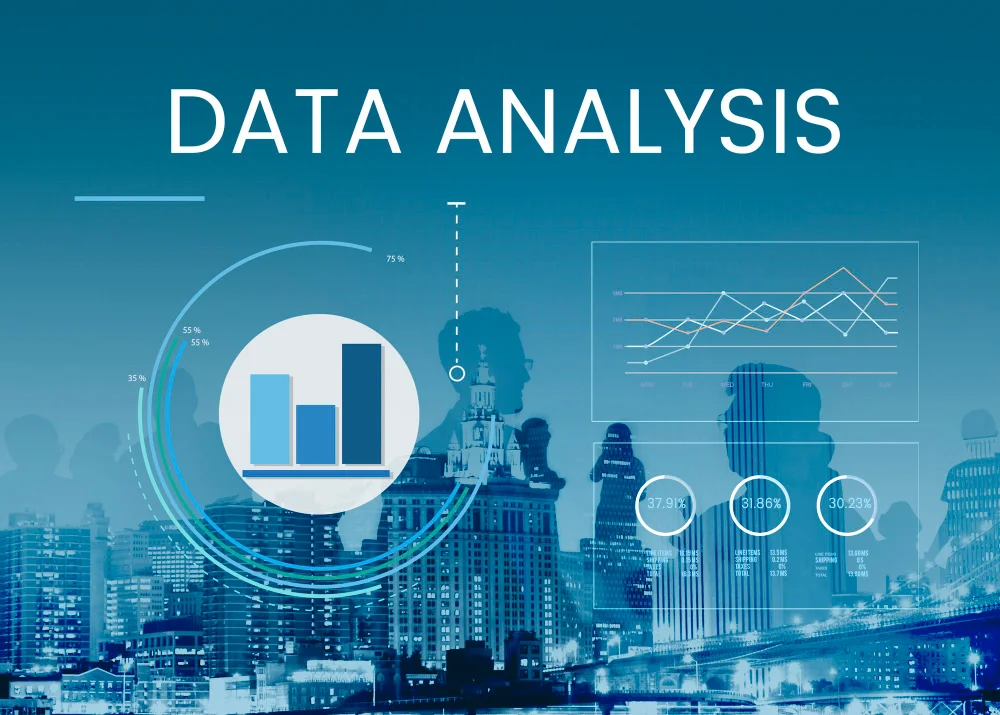

The Role of Big Data Analytics in Data Science: What You Need to Know
Published: 2025-01-11 11:36:02
In the era of digital transformation, data has become one of the most valuable assets for businesses and organizations worldwide. With the advent of technology, vast amounts of data are being generated every day, from social media posts to sensor data, e-commerce activities, and much more. The ability to analyze, process, and derive meaningful insights from this enormous volume of data has led to the rise of data science. At the heart of data science lies Big Data Analytics, which plays a crucial role in transforming raw data into actionable knowledge that drives decision-making processes.
The Role of Big Data Analytics in Data Science
This article explores the role of Big Data in Data Science, its characteristics, its applications, and how it helps businesses gain a competitive edge. It also discusses the technologies, tools, and techniques involved in Big Data Analytics, along with its challenges and future potential.

What is Big Data in Data Science?
Big Data refers to data that is too large, complex, or fast-moving for traditional data-processing software to handle efficiently. It involves datasets that are so vast in volume that they require advanced tools, techniques, and algorithms to analyze and extract valuable insights. The role of Big Data in Data Science is fundamental, as it enables data scientists to uncover patterns, trends, correlations, and other hidden insights from structured, semi-structured, and unstructured data.
Big Data in Data Science typically involves the collection, storage, and analysis of vast datasets from a variety of sources, such as IoT devices, social media, customer interactions, and business transactions. By leveraging this data, data scientists can create predictive models, identify patterns, and make data-driven decisions that can significantly impact an organization’s performance.
Know About: Top 10 Machine Learning Libraries Every Data Scientist Should Know
AI Tools for Digital Marketing 2025
Android App Development Certification Course
Become a Successful Business Intelligence Analyst
Benefits of Digital Marketing Course
The Characteristics of Big Data in Data Science
To understand the role of Big Data in Data Science, it is essential to first examine its key characteristics. Big Data can be classified by its “5 V’s”:
| Characteristic | Description |
| Volume | Refers to the sheer amount of data being generated every second. With the proliferation of IoT, social media, and other data sources, the volume of data is massive. |
| Variety | The different types of data can be structured, semi-structured, or unstructured. Data from sensors, videos, text, and social media posts are all considered diverse types of data. |
| Velocity | The speed at which data is being generated and processed. In real-time applications like stock trading or social media monitoring, data velocity is crucial. |
| Veracity | Refers to the quality and reliability of the data. Not all data is accurate or complete, so data scientists need to clean and validate the data before using it for analysis. |
| Value | The worth of the data being analyzed. Big Data becomes valuable when it is processed, analyzed, and transformed into actionable insights that benefit the business or organization. |
These characteristics illustrate the complexity and scale of Big Data in Data Science. Data scientists must have the tools and expertise to handle data with such varied attributes effectively.
Technologies Behind Big Data Analytics
Several technologies and tools have emerged to facilitate Big Data Analytics, allowing data scientists to extract valuable insights from large datasets. Here are some of the most commonly used technologies:

1. Hadoop
Hadoop is an open-source framework that allows for the distributed processing of large datasets across clusters of computers. It is one of the most widely used tools for Big Data in Data Science. Hadoop breaks down Big Data into manageable chunks and processes them simultaneously, speeding up analysis. Its core components include Hadoop Distributed File System (HDFS) and MapReduce, which allow data to be stored and processed efficiently.
2. Apache Spark
Apache Spark is a fast, in-memory data processing engine that is built for large-scale data processing. It is widely used in Big Data Analytics because of its ability to handle real-time data processing, iterative algorithms, and interactive queries. Unlike Hadoop MapReduce, which processes data in batches, Spark performs in-memory processing, which accelerates the overall data analysis process.
3. NoSQL Databases
Traditional relational databases (RDBMS) struggle with handling Big Data due to their limitations in scalability and flexibility. NoSQL databases like MongoDB, Cassandra, and Couchbase are designed to handle unstructured data and provide scalable solutions for storing large datasets. These databases are ideal for applications where the structure of data can vary and evolve.
4. Data Warehousing Solutions
Data warehousing solutions like Amazon Redshift and Google BigQuery allow organizations to store large amounts of structured data and provide fast query capabilities. These solutions are optimized for analyzing massive datasets in real time, making them valuable tools for Big Data in Data Science.
5. Machine Learning and Artificial Intelligence
Machine learning (ML) and artificial intelligence (AI) algorithms are used in Big Data Analytics to identify patterns, build predictive models, and make data-driven decisions. Data scientists apply various ML techniques, including supervised and unsupervised learning, to analyze large datasets and extract actionable insights.
Applications of Big Data in Data Science
Big Data in Data Science has a wide range of applications across different industries. Below are some key areas where Big Data Analytics plays a crucial role:
1. Healthcare
Big Data is revolutionizing healthcare by enabling predictive analytics and personalized medicine. With the help of data analytics, healthcare providers can analyze patient data to identify potential risks, improve treatment outcomes, and enhance overall patient care. For example, by analyzing data from electronic health records (EHRs), medical imaging, and genetic information, data scientists can identify patterns and predict diseases before they occur.
2. Finance and Banking
In the financial sector, Big Data is used for fraud detection, risk management, and customer insights. By analyzing large datasets from transactions, social media, and market trends, financial institutions can identify fraudulent activities, predict market movements, and offer personalized services to customers. Big Data Analytics also enables real-time decision-making in areas like algorithmic trading and credit scoring.
3. E-commerce
E-commerce companies rely heavily on Big Data Analytics to understand customer behavior, optimize supply chains, and enhance the user experience. By analyzing purchasing patterns, browsing history, and social media activity, companies can create personalized recommendations for customers, increase sales, and improve customer satisfaction.
4. Marketing and Advertising
Big Data plays a critical role in digital marketing and advertising. By analyzing consumer behavior, demographics, and online interactions, companies can target specific audiences with tailored advertisements. Social media platforms like Facebook, Instagram, and Twitter use Big Data to analyze user activity and optimize ad targeting, ensuring that businesses can reach the right customers.
5. Smart Cities and IoT
The Internet of Things (IoT) generates vast amounts of data from sensors, smart devices, and other connected technologies. By analyzing this data, cities can optimize traffic management, improve public services, and enhance energy efficiency. For example, traffic data collected from sensors can be analyzed to predict congestion patterns and provide real-time traffic management solutions.
Challenges in Big Data Analytics
Despite its numerous benefits, there are several challenges associated with Big Data Analytics:
1. Data Privacy and Security
With the growing amount of data being collected, ensuring privacy and security is a major concern. Organizations must comply with data protection regulations like GDPR and implement robust security measures to protect sensitive data.
2. Data Quality
Not all data is clean, structured, or accurate. Incomplete, inconsistent, or incorrect data can lead to inaccurate results and misinformed decisions. Data scientists must spend a significant amount of time cleaning and preprocessing data to ensure its quality.
3. Data Integration
Big Data often comes from various sources, making it difficult to integrate different types of data. Combining structured and unstructured data from disparate systems can be complex, requiring advanced integration techniques and tools.
4. Scalability
As data volumes continue to grow, organizations need scalable infrastructure and tools to process and analyze the data efficiently. Managing and storing large datasets while ensuring fast processing times can be a major challenge.
Read Also: Essential Data Science Projects for Beginners: A Guide to Building Foundational Skills
The Future of Big Data in Data Science
The future of Big Data in Data Science is bright, with several emerging trends shaping its evolution:

1. Real-Time Analytics
As businesses increasingly rely on real-time data for decision-making, the demand for real-time Big Data Analytics will continue to grow. Technologies like Apache Kafka and Apache Flink are enabling businesses to analyze data in real time, providing a competitive edge.
2. AI and Automation
AI and automation will play a significant role in Big Data Analytics by automating data cleaning, feature selection, and model building. This will enable data scientists to focus on higher-level tasks, improving efficiency and productivity.
3. Edge Computing
Edge computing is gaining popularity as it allows data to be processed closer to the source, reducing latency and bandwidth requirements. This is particularly important for IoT applications and real-time data processing.
4. Data Democratization
The democratization of data means that more people within an organization will have access to data and analytics tools. This trend will empower business users to make data-driven decisions without relying solely on data scientists.
Summary
The role of Big Data in Data Science is transformative, offering businesses and organizations the ability to derive meaningful insights from vast amounts of data. By leveraging the power of Big Data Analytics, organizations can make informed decisions, improve efficiency, enhance customer experiences, and drive innovation. As technologies continue to evolve, Big Data in Data Science will become even more critical, unlocking new opportunities for growth and success.
Data scientists, data engineers, and organizations must be prepared to tackle the challenges associated with Big Data Analytics and embrace the potential it holds for the future.
Project Ideas for Android App Development
Top 10 Key Reasons to Learn Coding
Top 5 Programming Languages IT Professionals Should Learn in 2024
Top Data Science Courses in Delhi
FAQs
1. What is the relationship between Big Data and Data Science?
Big Data provides vast datasets, while Data Science uses algorithms and methods to analyze and extract insights from that data. The two work together to drive data-driven decision-making and uncover patterns and trends.
2. How is Big Data used in Data Science?
Big Data is used in Data Science for tasks like predictive modeling, machine learning, and data mining to uncover patterns and inform business decisions in areas such as healthcare, e-commerce, and finance.
3. What are the main challenges of working with Big Data?
Key challenges include ensuring data privacy, maintaining data quality, integrating diverse data sources, and managing scalability as data volumes grow.
4. What technologies are used for Big Data Analytics?
Technologies like Hadoop, Apache Spark, NoSQL databases, and machine learning tools are essential for processing and analyzing Big Data efficiently.
5. What industries benefit the most from Big Data in Data Science?
Industries such as healthcare, finance, e-commerce, marketing, and smart cities benefit greatly from Big Data Analytics for improved decision-making and operational efficiency.
Read Also: Data Science vs Machine Learning: Key Differences Explained


